One year ago, on September 22, 2011, the White House launched its We the People petition website on WhiteHouse.gov. It provided the following explanation:
The right to petition your government is guaranteed by the First Amendment of the United States Constitution. We the People provides a new way to petition the Obama Administration to take action on a range of important issues facing our country. We created We the People because we want to hear from you.
In the following weeks, the website received much press attention, including a front page story in the Wall Street Journal. Since then, mainstream media coverage has been negligible. Now, it's time for the one year report card.
Fortunately, the White House has released a wealth of statistics touting the success of We the People, so we can make some educated guesses. A key finding is how remarkably difficult it is to create a petition with enough signatures to generate a White House response. As of September 4, 2012, citizens had created 45,901 petitions, of which 112 crossed the threshold for a response. In other words, the odds of creating a successful petition were approximately .24 percent or one in four hundred.
On October 3, 2011, the White House increased the threshold of signatures needed to cross the threshold from 5,000 to 25,000, effective November 2. No data were released on November 2 but as of October 26, 2011, 77 had crossed the threshold out of 12,513 created. This means that in the last ten months the odds of creating a successful petition dropped to .10 percent or one in a thousand.
To be displayed on the White House website, petitions have to first receive 150 signatures. As of October 30, 2011, one month after the launch of the White House website, there were 208 displayed petitions. This number has steadily decreased. As of September 5, 2012, there were only 16 active petitions.
Two factors help explain the dropoff. First, public officials don't like to explain their political positions clearly. As the saying goes, "ambiguity is the mother's milk of politics." The White House promised to do something it was simply not in its political self-interest to do. Anyone politically sophisticated who reads the petitions will conclude that some are politically a no-win to answer clearly. Indeed, petition websites tend to attract just the type of questions politicians don't like to answer unambiguously. Discouraging the rate at which successful petitions were created would thus reduce the number of self-inflicted political wounds.
Second, citizens don't like to waste their time. It usually requires a huge effort to secure 25,000 signatures within 30 days. Indeed, given the hurdles of signing a petition, it may take up to 100,000 people who go to the White House website intending to sign a petition to get 25,000 who actually sign. Receiving either an ambiguous reply or no meaningful action after all that work is enough to discourage most rational activists. Of course, some of the successful petitions did receive both a clear reply and action. For example, one petitioned the president to "Release the recipe for the Honey Ale home brewed at the White House," which received White House video coverage as well as extensive press coverage.
Although We the People was supposed to help unorganized interest groups find a voice, its 30 day signing limit and hoarding of names may have achieved the opposite result. Only well-organized interest groups could easily reach the 25,000 petition threshold within the allowed 30 days (and they presumably have other, more effective ways to get their voices heard). Meanwhile, unorganized interest groups may waste a huge amount of resources because the White House retains exclusive control of the names of those who sign a petition.
On August 23, 2012, the White House announced that it was publishing the source code for We the People. Other governments are expected to copy and build upon the code. But government should stop providing petition interfaces and leave it to private sector organizations such as Change.org, Care2.com, signon.org, and GoToPetition.com, which are happy to provide such services.
Instead, government should provide two petition services. First, it should develop a system for verified petition signing. Politically, this is an extremely hard problem, analogous to the problem of developing a trusted online voting system. But if Estonia can solve the problem, the United States can, too.
Second, it should develop a standardized data system, analogous to its election markup language (EML), to facilitate the exchange of petition data.
The White House also needs to rethink what it promises to do if specific thresholds are met. For example, I suggest two time-based responses: First, within 30 days of reaching the threshold, an agency head should sign a statement that the petition has been read.
Second, within 180 days of reaching the threshold, an agency head should certify in writing any specific actions taken in response to the petition.
All this should be codified by Congress as part of a Petitions Procedures Act analogous to the Administrative Procedures Act.
From the time of England's Glorious Revolution in 1688 until Congress temporarily banned petitions before the Civil War (part of a compromise with the South over slavery), petitions were a central part of the Western democratic tradition. New technology makes petitions once again an effective mechanism to enhance grassroots civic participation. But there needs to be serious thought about how to make this a reality.
The Obama administration has used its online petition system to send the popular message that it wants to strengthen American democracy by making itself more democratically accountable. Unfortunately, the system it has developed is more of a political gimmick than a serious attempt to revitalize the role of the petition in American democracy. Technically, the problems are easy to solve; politically, not so.
